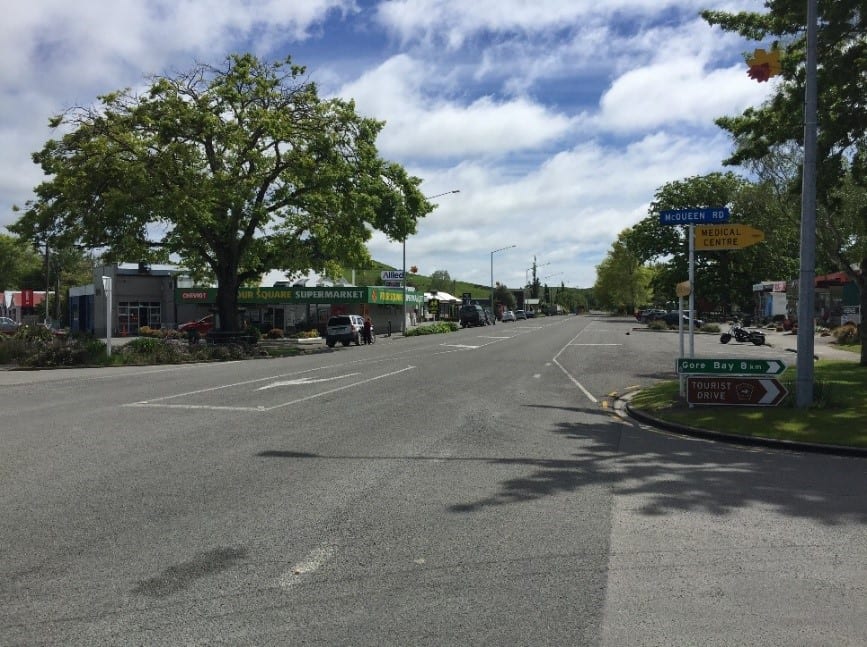The importance of personal relationships in risk mitigation:
Meeting with business owners in North Canterbury
24/09/2018
By Robert I Radics and Linh N K Duong
Rural value chains are rich in personal relationships and these play a key role in risk mitigation.
A team of researchers have been interviewing local businesses in North Canterbury to explore the resilience of rural supply chains to natural hazards as part of Resilience to Nature’s Challenges. Coincidentally, the magnitude 7.8 November 2016 Kaikōura earthquake occurred during the study period, providing an opportunity to investigate how this event affected businesses in the area.
A value chain is the process by which a business adds value to produce its product. Generally, it involves the business receiving raw materials, adding value to the raw materials through various processes to create a finished product, and then selling that finished product to customers. On the other hand, a supply chain is the system of organizations, people, activities, information, and resources involved in moving a product or service from the supplier to the customer.
Many North Canterbury businesses’ supply chains were disrupted by the 2016 Kaikōura earthquake when State Highway One (SH1) was closed between Seddon and Cheviot. The road was closed for just over a year, and the main railway line was closed for ten months (some services are still not restored).
Researchers have been exploring the effects of the disaster on the larger economy, as well as the recovery mechanism. This work is an in-depth analysis, looking at how a collapsed or partly functioning value chain affects the individual businesses and their value chains, and how we could mitigate the risks of a bullwhip (increasing swings in inventory in response to shifts in customer demand), snowball (propagation and amplification of disruptions) or ripple effect, for example.
The team is using a bottom-up approach to explore how the networks of rural supply chains, their connections with rural communities, infrastructure and dependency on partners further afield, were affected by the 2016 Kaikōura earthquake.
The bottom-up approach is useful as it gives us the ability to identify different behaviour and bounce back mechanisms of affected businesses after the quake. We have been able to compare behaviour and recovery of businesses on SH1 in North Canterbury, which were essentially isolated after the road closure, with businesses on the bypass roads, which a higher level, bird-eye view would not have been able to do.

Interviewing
We met with business owners and managers in North Canterbury and asked them about their supply chains and how they were affected by the quake. The interviewees were generous with information that went beyond the answers of our questions, and the stories and perspectives shared resulted in interesting and rewarding conversations.
As part of participating, each interviewee will receive a map of their value chain and evaluation of its strengths and weaknesses. This will include identification of opportunities in the business’ supply chain management for improvement, with accompanying benchmarks.

Supplier information
| Your company score | Industry average | District average | |
| Reliability | 9.0 | N/A* | 8.4 |
| Communication | 6.7 | N/A* | 7.7 |
| Personal relationships | 5.3 | N/A* | 7.1 |
| Willingness to compensate | 4.3 | N/A* | 6.3 |
| Easy to do business without this supplier | 7.3 | N/A* | 5.3 |
| Transparency of the supply chain | 4.7 | N/A* | 6.0 |
Client information
| Your company score | Industry average | District average | |
| Reliability | 10.0 | N/A* | 8.8 |
| Communication | 10.0 | N/A* | 8.1 |
| Personal relationships | 6.7 | N/A* | 8.2 |
| Willingness to compensate | 10.0 | N/A* | 7.0 |
| Easy to do business without this client | 3.0 | N/A* | 5.6 |
| Transparency of the supply chain | 3.3 | N/A* | 5.4 |
* More information on industry averages will become available as data collection continues.
Examples of part of the feedback report.
Outcomes
The Kaikōura event was not the direct focus of these discussions, but talking about it was unavoidable. Farmers and service providers exposed to the event had improved their preparedness since, and were more resilient than those who had not personally experienced a disaster. Some of the preparedness activities that they had undertaken included increasing inventories, improving partnerships and in some cases adding infrastructure to substitute the centralised systems like generators and waste water cleaning systems.
The togetherness and interdependence in the North Canterbury community was evident. After the earthquake, farmers checked on their neighbours personally if they were not available via phone, and provided immediate help to each other. Employers called and visited employees who were potentially affected by the quake too.
During and after the natural disaster event, most of the partners across the value chain were ready to offer help to others far beyond their contractual obligations. It seems as though a commitment beyond the business’ interests comes into play when a community needs immediate help.
Data collection and linking the nodes in the complex value chain network will continue until early next year. We will send another information package to our interviewees with a picture and description of their extended value chain before the final report and publications are produced. This transparency and information flow will give participants another layer of knowledge and certainty, as well as providing a risk mitigation opportunity for them



